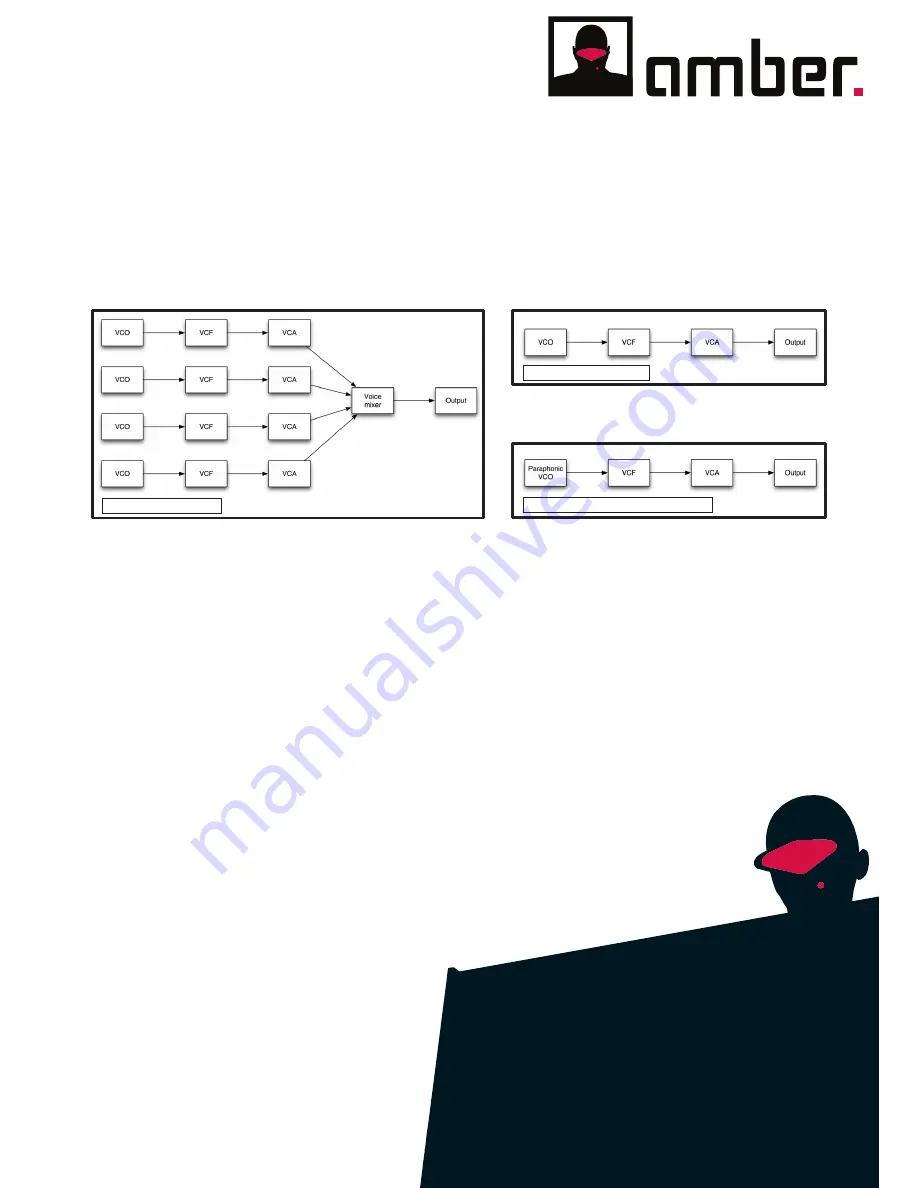
5
5: Amber
5:1 Overview
Amber represents one of the first attempts to realistically model classic string-ensemble synthesizers from the 1970s.
These instruments featured a special oscillator technique for full ‘polyphony’ using a single synth voice. The word
‘polyphony’ is in inverted commas because these instruments were technically not true polyphonic synths.
Divide-down synthesis explained
To be fully polyphonic, a synth must be able to produce several entire voices simultaneously. This means that a true
polyphonic synth is effectively a stack of full monosynths with some extra processing functions for assigning keyboard
input to the available voices.
A divide-down synthesis architecture is very different. Generally, the frequencies of a set of 12 master oscillators (for the
highest octave) are divided down to lower frequencies multiple times to produce the full range of notes on the built-in
keyboard (typically 4 or 5 octaves). The principle is similar to Strobe’s sub-oscillators, except that keyboard input provides
access to these sub-octaves instead of a fader.
Polyphonic architecture
‘Paraphonic’ divide-down architecture
Monophonic architecture
This approach became known as ‘paraphonic’ – a term introduced by Roland’s RS-505 Paraphonic Strings instrument.
While the oscillators produce multiple notes simultaneously, all notes typically shared a single amp envelope and filter.
Implementations of divide-down synths
Divide-down synths were not intended to produce ‘big’ sounds such as those from a conventional ‘fat’ analogue mono- or
polysynth. In fact, most implementations of this technology involved using a final chorus stage to thicken the output and
create the illusion of many string instruments playing at once to create an ensemble sound. Turning off the chorus resulted
in a rather sterile and characterless timbre – all notes in the keyboard range are perfectly in phase, meaning there is no
beating.
Sometimes a monophonic bass synth section was provided, such as that in the ARP Omni series, which typically
bypassed the chorus circuit and featured a resonant filter, allowing the bass register to cut through more powerfully.
Instruments based on divide-down technology became primarily used for simple string, piano and organ sounds – actually
not very ‘realistic’, but very passable and pleasant representations, with the crucial ability of being able to play all notes on
the keyboard simultaneously.
String synths in popular use
In spite of their limitations, string synths became very widely used. It was common in the 1970s for keyboard players
to use a string ensemble synth alongside other synths and electromechanical keyboards. Perhaps the most well-
known examples were the ARP Omni series, Roland RS-505 and Eminent Solina.
A few string synths such as the Logan String Melody series and the Korg Lambda featured a dedicated AR
amp envelope for each note on the keyboard. This approach involved increased cost, weight and mainten-
ance issues, and the less sophisticated single-VCA instruments like those by ARP and Eminent were
generally more widely used.
Even more sophisticated implementations of divide-down technology were involved in the Moog Polymoog
and the Korg 3x00 series, with the latter particularly notable for being a paraphonic
semi-modular synth.
Содержание DCAM SYNTH SQUAD
Страница 1: ......
Страница 2: ......
Страница 26: ...26 Shaper Filter Amp sections...
Страница 109: ......
Страница 110: ......
















































